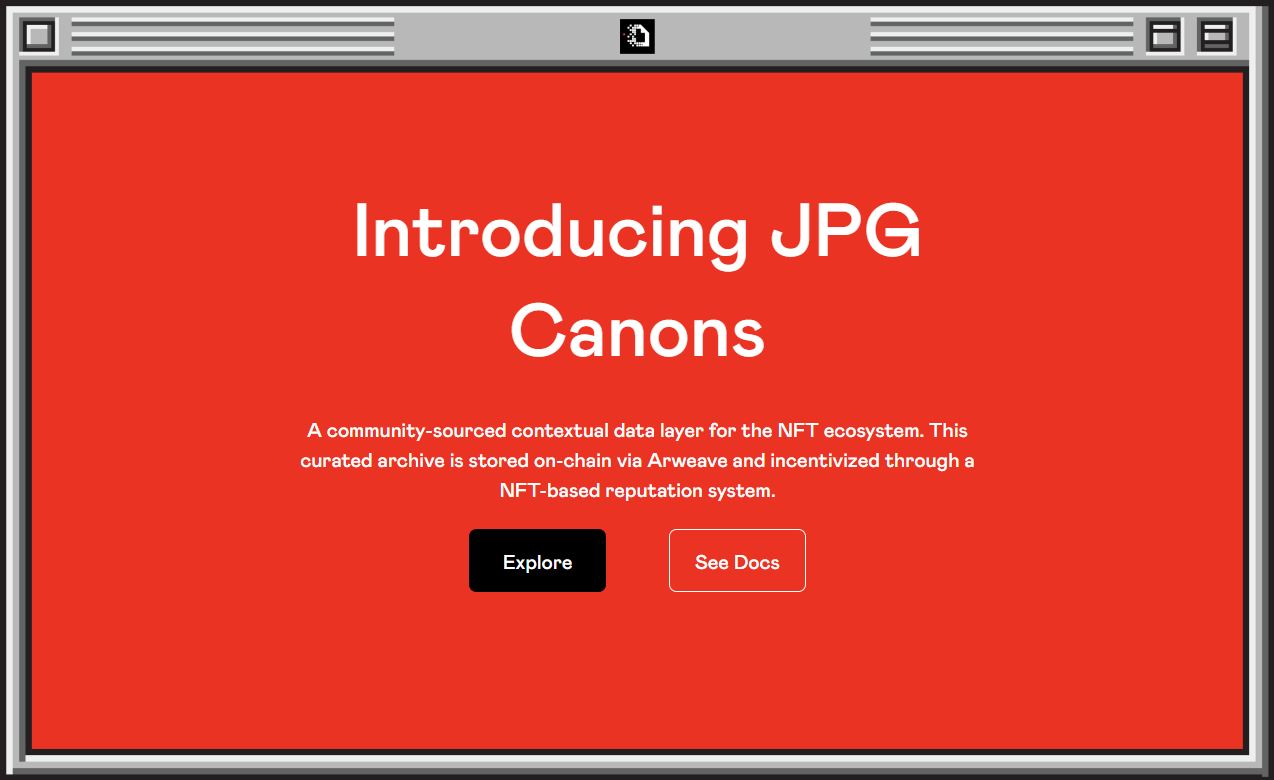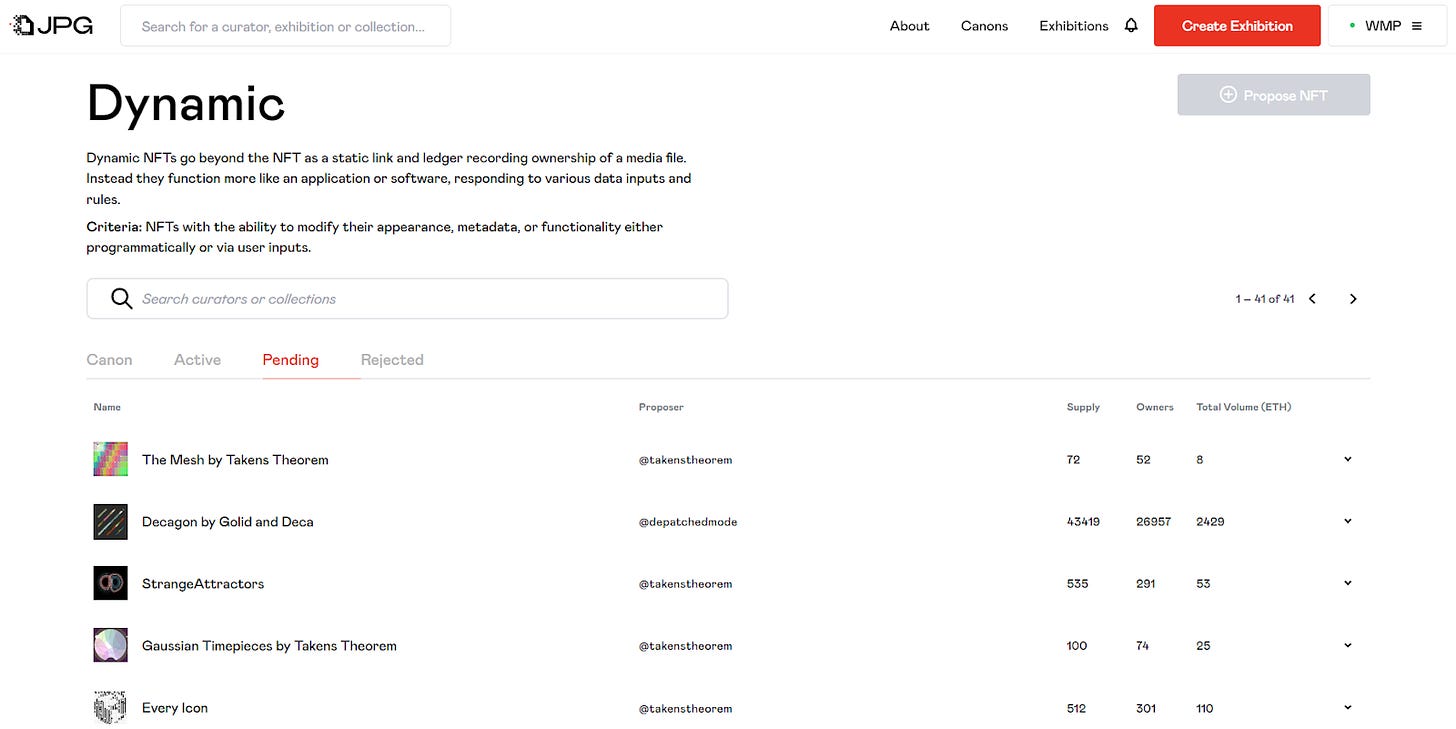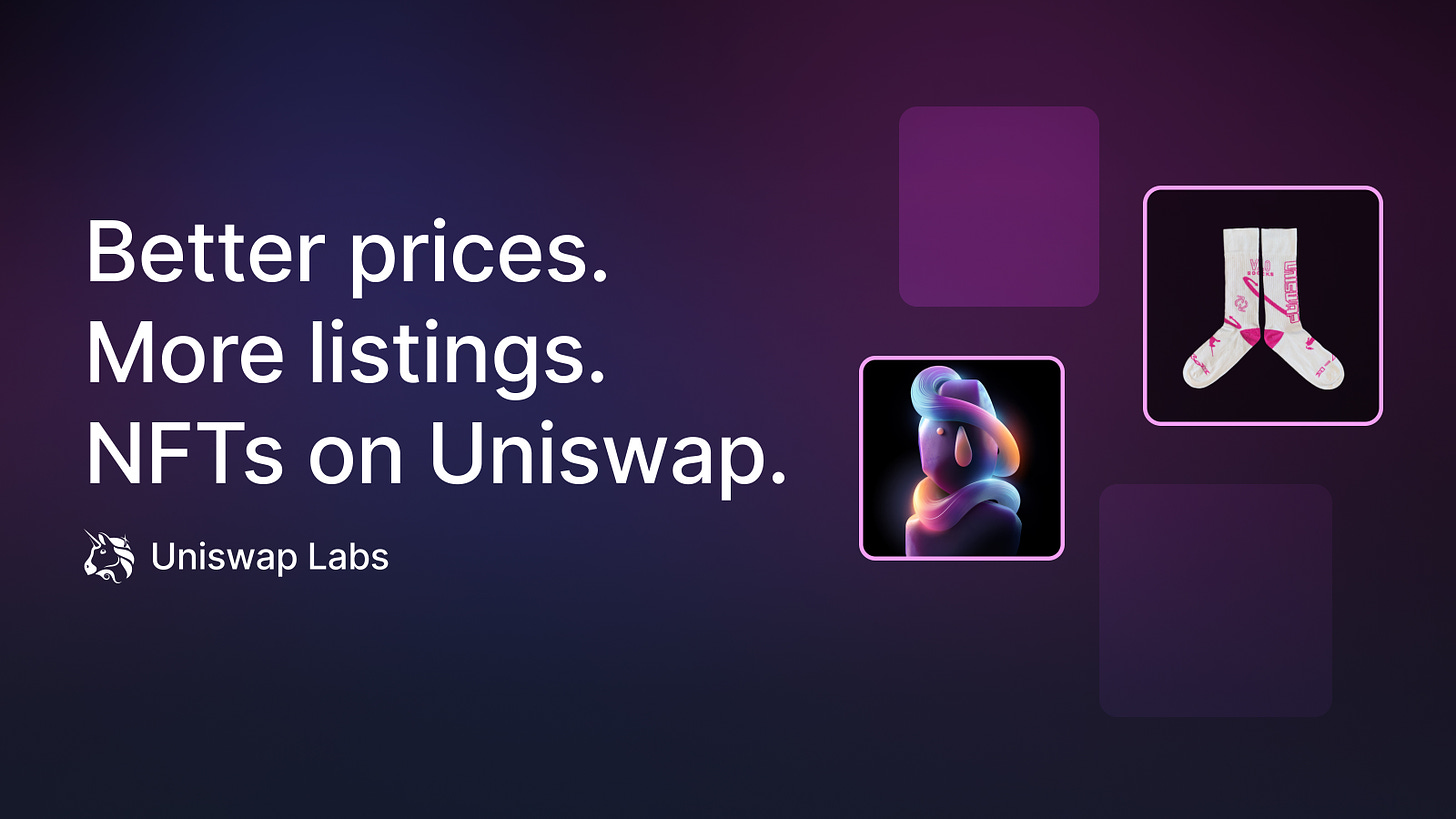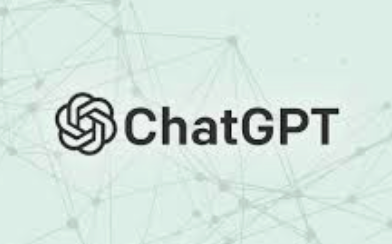NFT TCRs 🪙 – by William M. Peaster


Metaversal is one Bankless newsletter for weekly levels on NFTs, virtual worlds and collectibles
Dear Bankless Nation,
In my last NFT skill tree write-up, “curation” was one of the many skill branches I highlighted.
Since the blockchain is an ever-expanding maze of digital things, curation is important because it improves context, discovery, organization, and science around NFTs.
In other words, curation improves cultural value of NFTs. As more of our lives come online and then become rewired, we need more infrastructure to support such cultural values as well.
Full disclosure, I contribute to JPG, an NFT curation protocol, so I have a unique view here.
That said, JPG has just launched a Token Curated Registry (TCR) system that is on track to become the first community public good of its kind, an open contextual data layer for NFTs.
This TCR, JPG Canons, still has its training wheels on, but it’s ready to provide useful “cultural legos” – e.g. a decentralized repository of self-published artists or an evolving compendium of scam NFT projects – to the NFT ecosystem as it evolves.
For today’s post, let’s dive into this new NFT cultural infra and walk you through what to expect from it going forward!
-WMP
🙏 Sponsor: Uniswap Labs — Better Prices, More Listings: NFTs on Uniswap✨
JPG is both a curatorial platform and curatorial infrastructure for Ethereum NFTs.
On the platform side of things is JPG exhibitswhich anyone with an Ethereum address can use to create NFT galleries whose data is then backed up on Arweave, a decentralized storage network, for perpetuity.
On the infra side is the new TCR system, JPG guns. Built on Ethereum and also backed up on Arweave, these community-curated and community-driven lists will index NFTs and map relational networks among them for enhanced cultural context in the NFT ecosystem.
A token-curated registry is a list of items maintained in a decentralized manner through token-based voting.
Why decentralized? Because with centralized lists, you have to trust that the administrators are honest and not abusing or arbitrarily manipulating the entries there. This won’t fly in crypto!
Consequently, a TCR system is explicitly designed to help a group curate and organize important information without centralized administration.

JPG Canons is a TCR system that uses NFT-based voting to create and manage high-quality decentralized lists of NFTs, e.g. “Historical Collectibles”, “Podcast NFTs”, “Noun DAO Derivatives.”
Users proposing Canons must provide a title, description, criteria and three potential entries to start the process. This kickstarts a proposal cycle where other community members can propose appropriate collections or individual NFTs and consequently vote on everyone else’s contributions.

Access to this governance process is free and non-transferable Canonicon NFTswhich is customizable and dynamically tracks owners’ management actions through a built-in reputation and XP system.
As such, the more you vote and suggest with your Ethereum wallet, the more XP you get, which in turn unlocks more voting power over Canons and more Canonicon team customization options over time.
During this alpha stage, JPG starts with a single “Dynamic NFTsCanon as a trial version and then select some other useful categories before they open the new Canon proposal process to everyone who has a Canonicon NFT early next year.
Note that the initial Canonicon approval list centered on JPG community members, but in the coming days the approval list will reopen via wallet or tweet verification, so keep your eyes peeled if you’re interested in joining and contributing to the first Canons and further.
Canons is a bottom-up NFT TCR system intended to serve as a free public resource for discovery and indexing of the NFT space. The goal is for these NFT lists to make archiving, discovery, and research easier and more reliable for web3 experts and web3 newcomers alike.
NFT marketplaces could seriously use decentralized verification tokens. The chroniclers of NFT history want to chart the rise of tangible intangible digital collectibles. Crypto artists want to defragment and preserve their catalogs for posterity.
These are just a few of the areas where Canons can make a difference going forward. And at a time when big algorithms dominate mainstream culture everywhere we look, community-coordinated efforts through NFTs and for NFTs represent an interesting escape from the status quo and toward the next great cultural frontier, online and on chain.
William M. Peaster is a professional writer and creator of Metaversal– a bankless newsletter focused on the rise of NFTs in the crypto-economy. He has also recently contributed content to Bankless, JPG and more!
Subscribe to Bankless. $22 per month. Includes archive access, Inner circle & Divorced.
Trade NFTs across major marketplaces to find more listings at better prices. NFTs on Uniswap are open source, trustless and self-sufficient. To celebrate NFTs on Uniswap, we are flying $5 million to certain historical Genius users. Start trading NFTs today on Uniswap.

👉 Get started now!
Not financial or tax advice. This newsletter is strictly educational and is not investment advice or a solicitation to buy or sell assets or make financial decisions. This newsletter is not tax advice. Talk to your accountant. Do your own research.
Mediation. From time to time I may add links in this newsletter to products I use. I may receive a commission if you purchase through one of these links. In addition, the Bankless writers have crypto assets. See our investment information here.


![Bitcoin [BTC]: A sell-off could be on the horizon, unless… Bitcoin [BTC]: A sell-off could be on the horizon, unless…](https://www.cryptoproductivity.org/wp-content/uploads/2023/03/po-2023-03-22T102417.543-1000x600-520x245.png)






















